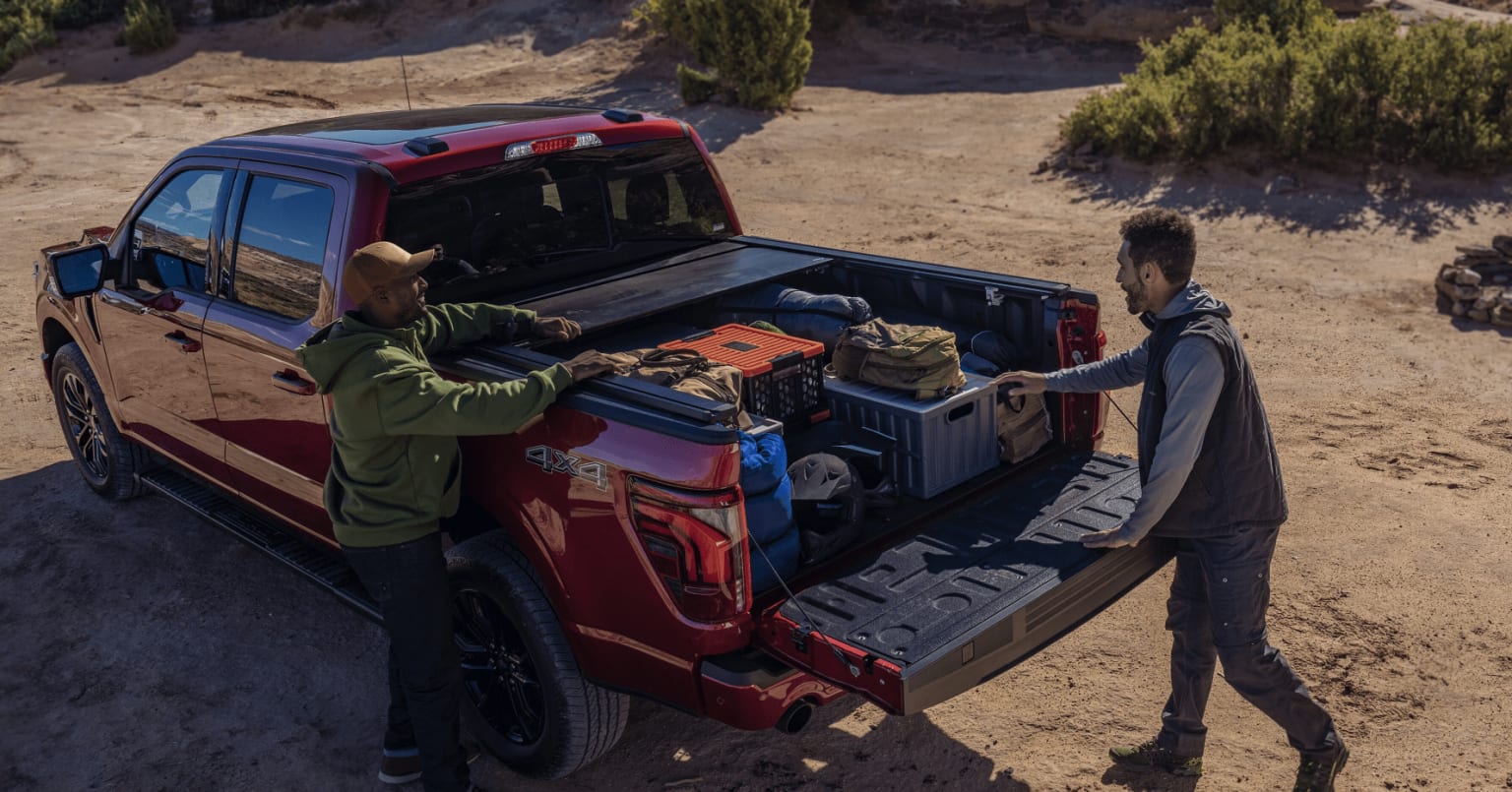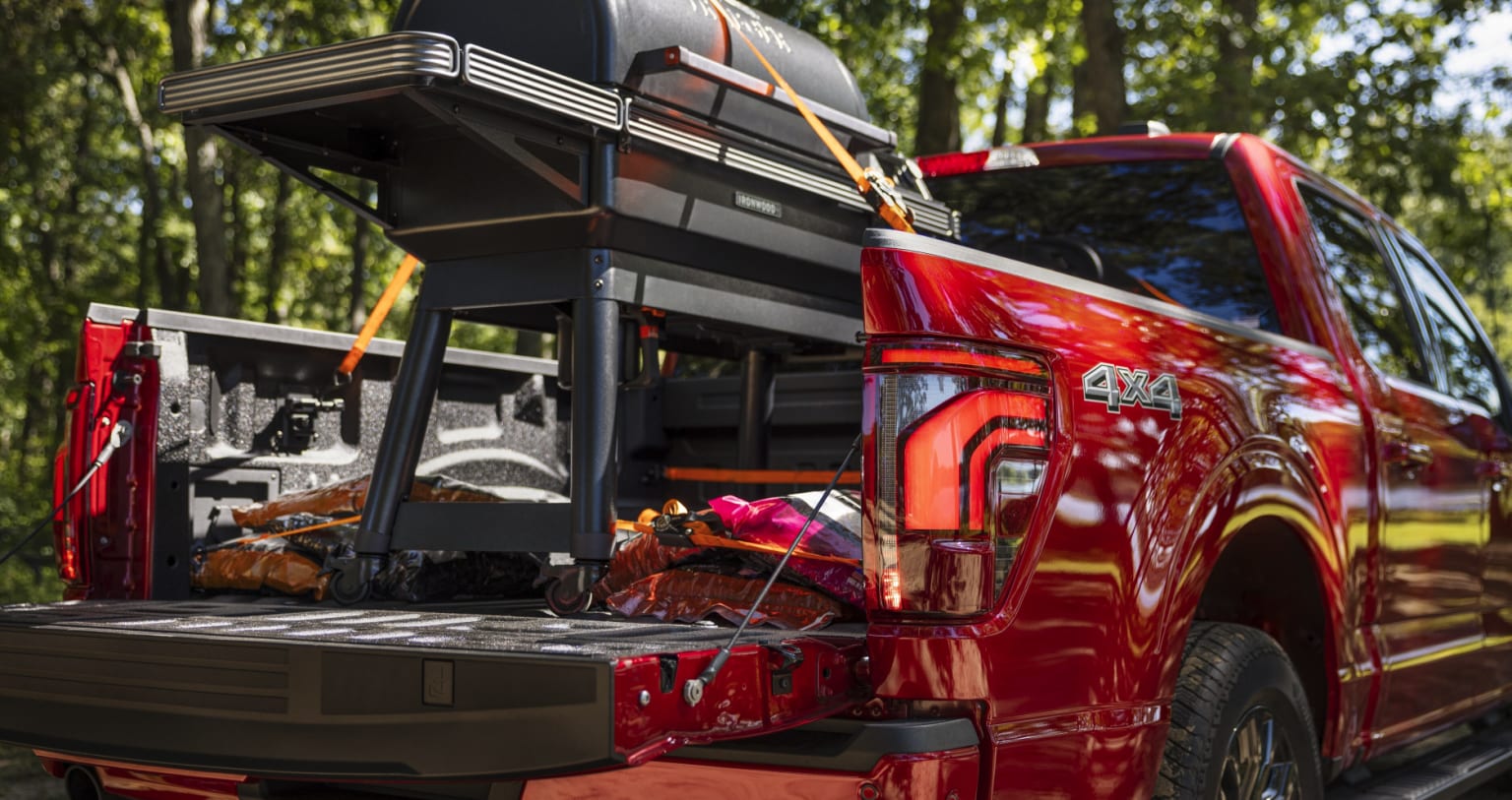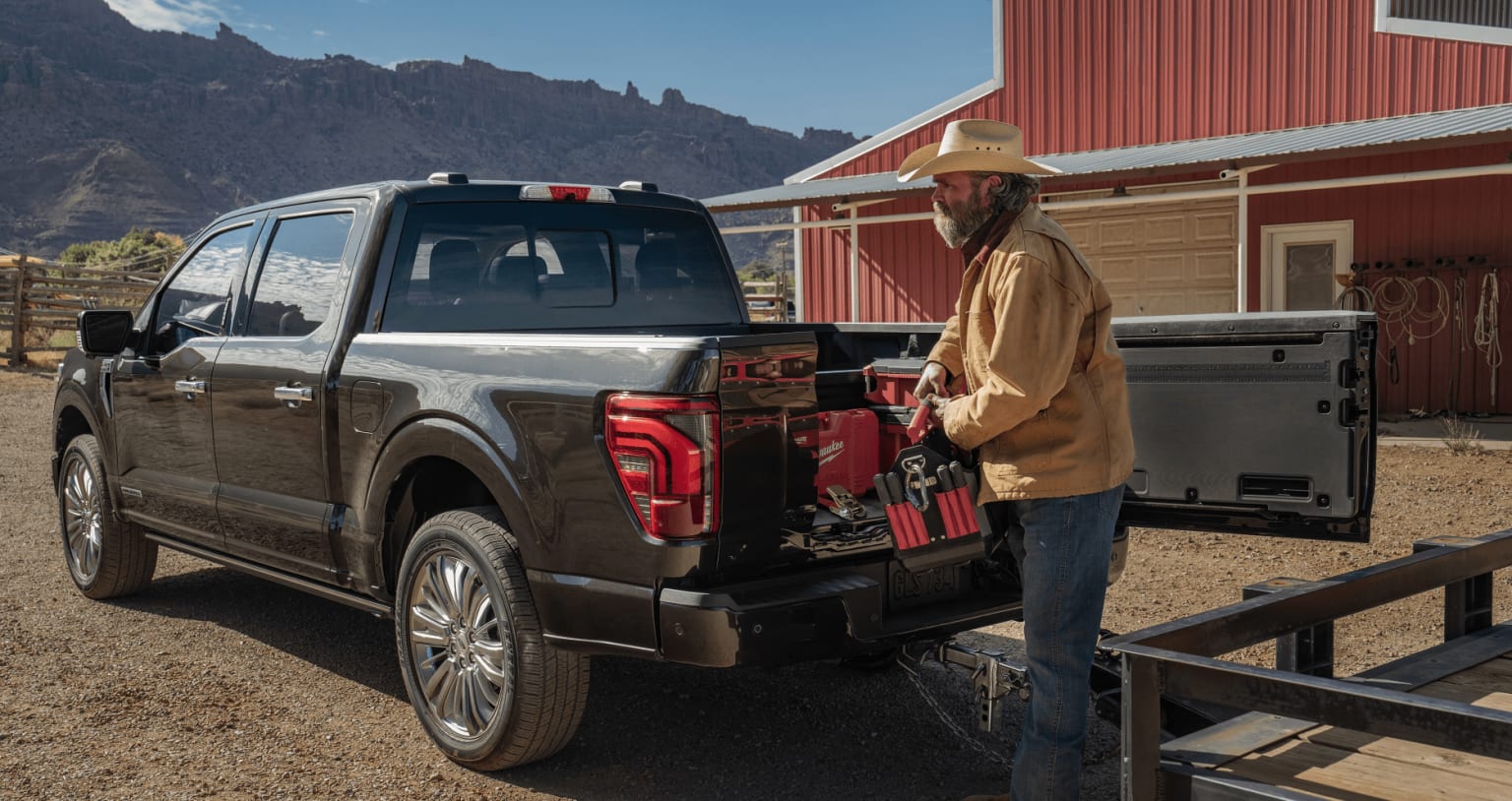
How Much Weight Can a Ford F150 Carry in the Bed
Are you wondering if your Ford F150 can handle that heavy load you need to haul this weekend? Knowing your truck's payload limits is key. It's about safety, performance, and getting the job done right.
The Ford F150 is America's best-selling truck for a reason. It's great for work, recreation, and daily tasks. But, the f150 payload capacity isn't just one simple number.
Your 2025 F150's bed capacity ranges from 1,400 to 2,445 pounds, depending on your specific configuration. The maximum payload of 2,445 pounds comes with the 3.5L EcoBoost V6 engine in a Regular Cab with 8-ft box and 4x2 drivetrain.
Different factors affect your truck's hauling capability. Your cab style, engine choice, and drivetrain all play important roles. At Magic City Auto Group, we're committed to helping you understand these variations. This way, you can make informed decisions about your F150 purchase and usage.
Understanding Ford F150 Payload Capacity Fundamentals
Learning about your Ford F-150's weight limits starts with understanding the difference between what you can carry and tow. These basics are key to safe driving and making smart loading choices.
We'll look at what affects your ford f150 bed weight limit. Knowing this helps you use your truck safely and efficiently.
What Is Payload Capacity vs. Towing Capacity
Payload capacity is how much weight your truck can hold inside. This includes passengers, tools, and cargo in the bed. Everything inside or on top of your F-150 counts towards this limit.
Towing capacity is different. It's about how much weight your F-150 can pull, like a trailer or boat. Your truck's towing capacity doesn't change how much you can carry in the bed.
These two capacities are important but serve different needs. You might have a high towing capacity but a lower payload capacity, or the other way around. Knowing both helps you plan better.
Calculating payload capacity is simple: subtract your truck's curb weight from its GVWR. Ford F-150 models have GVWRs from 6,100 to 7,850 pounds and curb weights from 4,021 to 5,540 pounds.

Factors That Affect Your F150's Bed Weight Limit
Several factors affect your ford truck bed capacity. Knowing these helps explain why similar F-150s might have different payload ratings.
The cab type greatly affects capacity. Regular Cab models usually have higher payload ratings because they're lighter. SuperCab or SuperCrew models have more doors and interior, which adds weight and lowers capacity.
Your engine choice also matters. Bigger, more powerful engines weigh more than smaller ones. A V8 engine, for example, adds a lot of weight compared to a turbocharged V6, affecting your payload.
Drivetrain selection also impacts your weight limits. Four-wheel-drive (4x4) systems have more parts like transfer cases and driveshafts. These add weight, reducing payload capacity compared to two-wheel-drive (4x2) models.
Optional equipment and packages can also reduce capacity. Extras like sunroofs, premium audio, and heavy-duty towing packages add weight. Even small options can add up and affect your payload rating.
Bed length affects weight distribution but doesn't change the capacity number. Longer beds help distribute weight better, improving handling and safety.
How Much Weight Can a Ford F150 Carry in the Bed by Model and Year
The weight your F-150 can carry changes a lot based on the model year and setup. Knowing the exact payload is key for planning work and fun activities. The cab style, engine, and trim level all affect how much your truck can carry.
Regular Cab F150 Payload Specifications
Regular Cab models lead in payload ratings in the F-150 lineup. They can carry the most because they are the lightest. Their design also helps distribute weight well for heavy loads.
Here are the key Regular Cab payload specifications:
3.5L EcoBoost V6 Regular Cab: Up to 2,445 pounds payload capacity
5.0L V8 Regular Cab: Up to 2,230 pounds payload capacity
2.7L EcoBoost V6 Regular Cab: Up to 1,785 pounds payload capacity
PowerBoost Hybrid Regular Cab: Up to 1,740 pounds payload capacity
The 3.5L EcoBoost V6 is the top choice for carrying the most cargo. It balances power and weight well. Regular Cab trucks are great for those who need to carry a lot of cargo.
SuperCab and SuperCrew Payload Differences
SuperCab models offer a balance between cargo space and passenger comfort. They can handle 1,800 to 2,200 pounds of payload. The extra space adds weight but offers more storage and seats.
SuperCrew models focus on passenger comfort, not maximum hauling. They can carry 1,400 to 2,225 pounds. The four full-size doors and larger interior mean less payload but more versatility for families.
Key differences include:
SuperCab: Extended cab with smaller rear doors and jump seats
SuperCrew: Full four-door cabin with complete rear seating
Weight penalty: SuperCrew models typically carry 200-400 pounds more curb weight
Payload trade-off: More passenger space means less cargo capacity
Engine and Trim Level Impact on Cargo Capacity
The engine you choose greatly affects your truck's payload. Different engines offer unique benefits for hauling. The engine's weight and how it's mounted also affect cargo capacity.
Engine payload breakdown:
2.7L EcoBoost V6: Up to 1,785 pounds (lightweight, fuel-efficient option)
3.5L EcoBoost V6: Up to 2,445 pounds (maximum payload champion)
5.0L V8: Up to 2,230 pounds (traditional power with solid capacity)
PowerBoost Hybrid: Up to 1,740 pounds (eco-friendly with moderate capacity)
Trim levels also impact your F150 hauling weight a lot. Base trims like XL and STX have the highest payload ratings. These models focus on work and have fewer luxury features that add weight.
Luxury trims like King Ranch and Platinum have less cargo capacity for more comfort. They have premium materials, advanced tech, and comfort features that reduce payload by 100-300 pounds. Always check the payload for your desired trim level before deciding.
Practical Loading Tips and Safety Guidelines for Your F150
Getting the most from your F-150's hauling starts with knowing how to load it right. Owning a capable truck means facing different hauling challenges. Smart loading practices help you stay safe and use your truck's full capacity.

Your F-150 has technology to make loading easier. Many models have onboard scales that show payload weight in real-time. This helps you avoid going over the maximum load for your F150 bed.
Different bed lengths need different loading strategies. The F-150 has three bed options: 5.5-foot, 6.5-foot, and 8-foot. Each size changes how you should distribute weight and secure cargo. Knowing your truck's bed weight capacity helps you plan better loads.
Proper Weight Distribution in the Truck Bed
How your truck handles depends on weight distribution. Place heavy items in the bed's center when possible. This keeps your truck balanced and stable.
Avoid putting all weight in one corner. This causes handling issues and stresses your truck's frame. Spread heavy items across the bed floor evenly.
Put heavy cargo items over the rear axle when you can. This gives the best balance and control. Lighter items can go toward the front or back. Always secure everything with proper tie-downs, no matter the weight.
Essential Safety Considerations When Loading Heavy Cargo
Safety is the top priority when loading heavy cargo in your F-150. Never go over your truck's payload rating, even if it fits. Overloading affects braking and steering.
Watch for signs of overloading. These include the rear end sagging, headlights pointing up, or trouble steering. If you see these signs, remove some cargo right away. Staying within the maximum load for your F150 bed keeps you and others safe.
Weather conditions also impact safe loading. Wet or icy roads need extra caution with heavy loads. Consider reducing cargo weight in bad weather. Your truck's bed weight capacity doesn't change, but safe driving practices do.
Use proper tie-down techniques for all cargo. Invest in quality straps, chains, or bungee cords rated for your load. Check your tie-downs often during long trips. Loose cargo becomes dangerous in sudden stops or accidents.
Visit Us Today
At Magic City Auto Group, we know choosing the right F-150 is all about your hauling needs. We're here to help you find the perfect truck for your work and lifestyle. Contact us today for personalized advice on picking an F-150 with the payload capacity you need.
FAQ
How much weight can a Ford F150 carry in the bed?
The Ford F150 bed can carry between 1,500 to 3,325 pounds. Regular Cab models can carry the most. SuperCrew models carry less because they are heavier. The exact capacity depends on the cab style, engine, drivetrain, and optional features.
Which F150 configuration has the maximum payload capacity?
Regular Cab F150s usually have the highest payload capacity. They are lighter than SuperCab and SuperCrew models. The right engine and drivetrain can make a Regular Cab carry the most. But, think about how many people you need to carry too.
How does engine choice affect my F150's cargo weight capacity?
Different engines affect payload capacity differently. The 3.5L EcoBoost V6 often has high payload ratings and strong performance. But, heavier engines can lower payload capacity because they add weight. Check the payload ratings for each engine when choosing your F150.
Does the F150 truck bed weight capacity change between model years?
Yes, the Ford F150 bed capacity can change with each model year. Design changes, new engines, and updated configurations can affect payload. Always check the payload rating for your exact year and model.
What factors reduce my F150's hauling weight capacity?
Several things can lower your F150's payload capacity. Luxury trim packages, optional features like sunroofs, four-wheel drive, and extra passengers in the cab all add weight. Every extra pound reduces the cargo space in the bed.